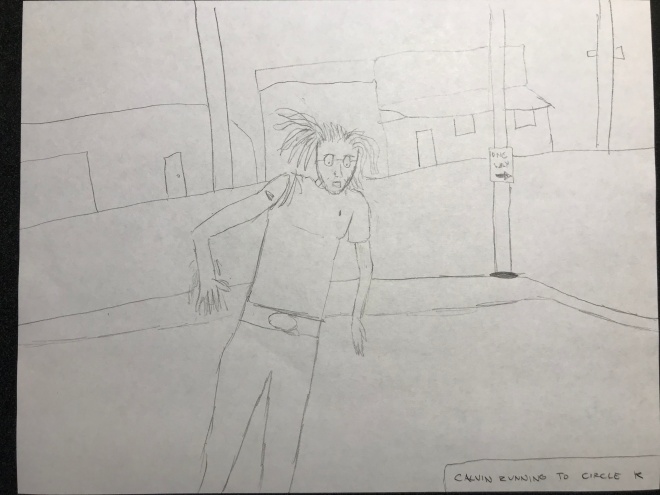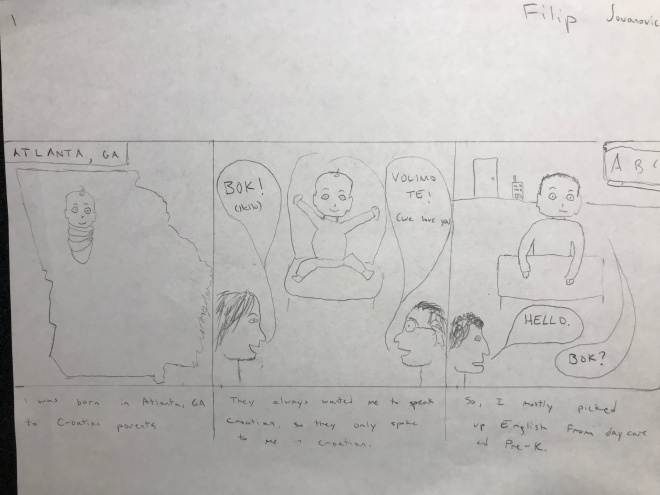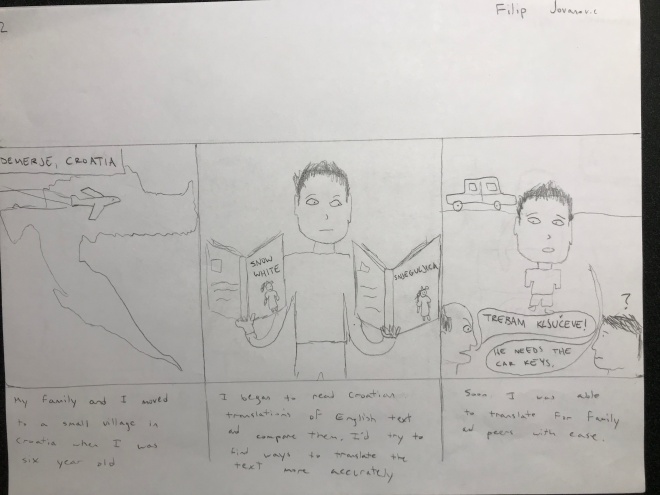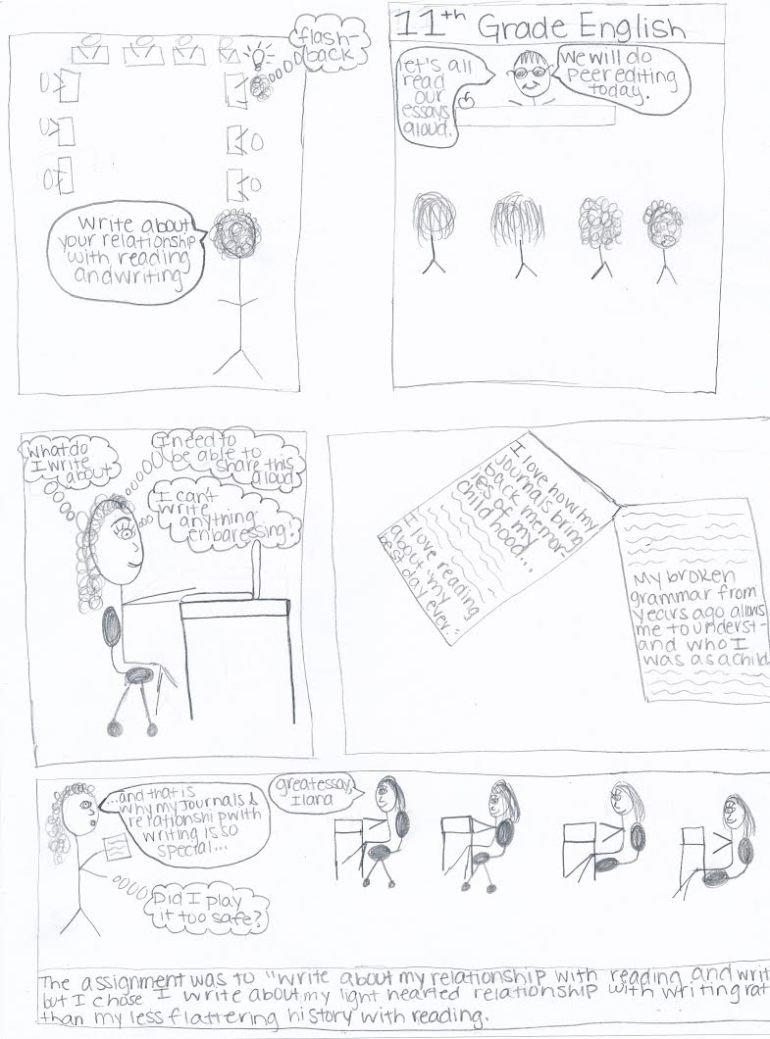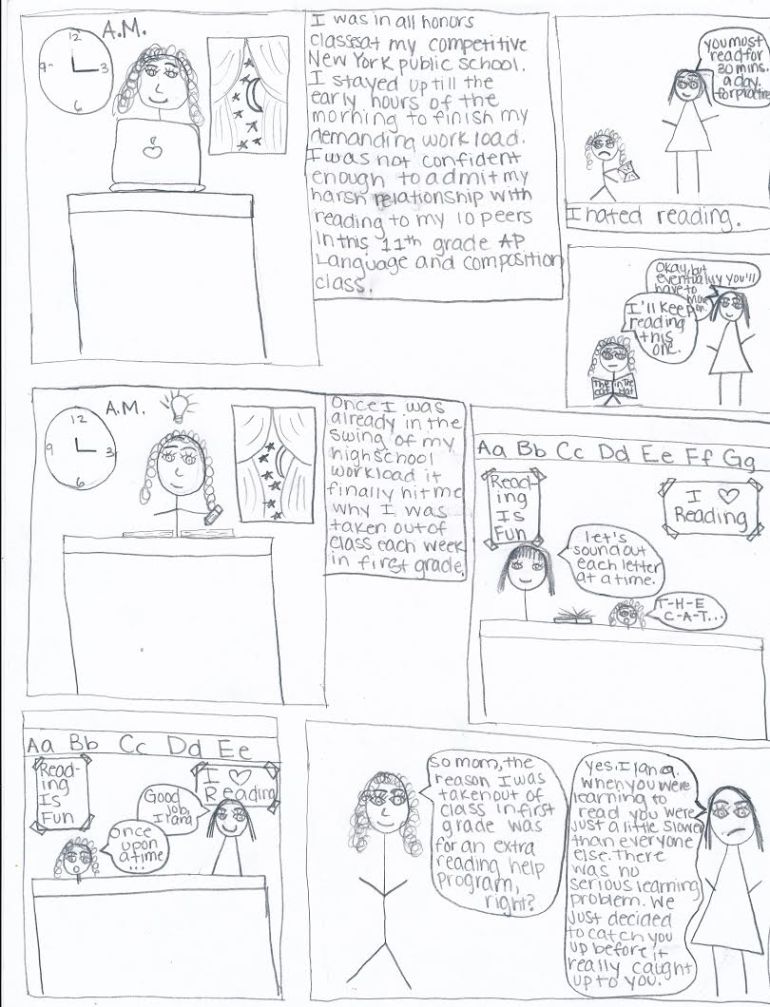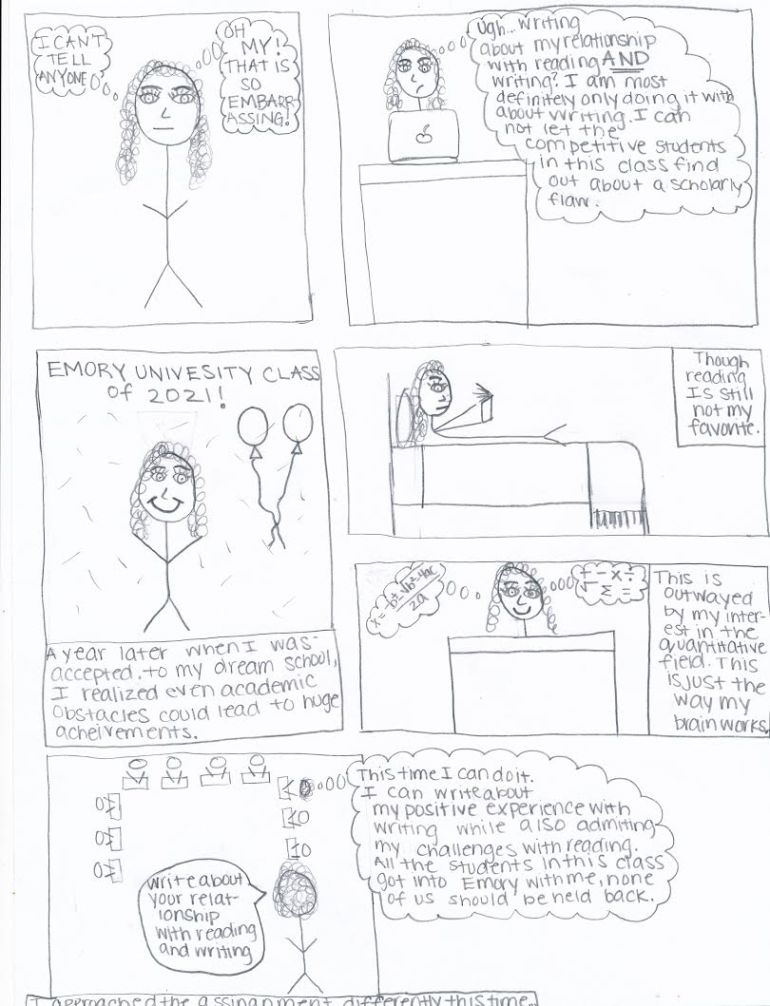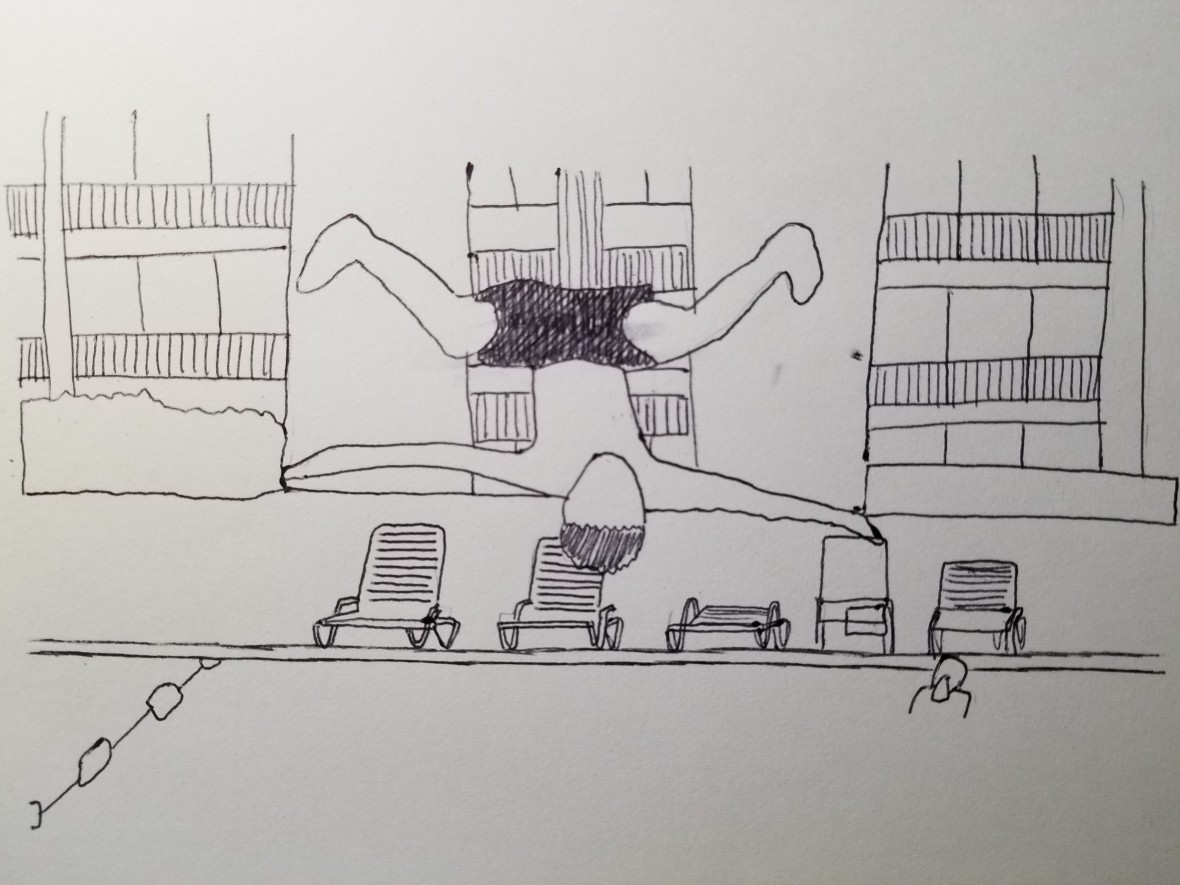LN Comic Sketch – Draft I
When approaching this assignment, I wanted to take on sketching without too much planning. Often I find that creativity is hindered by over-thinking and over-analyzing content, so I began drawing lines and creating the borders of my panels; using a pen so I couldn’t erase or backtrack. When sketching the images of individual moments from my narrative I tried to stray from using a single perspective, and attempted to compose creative renderings of my dialogue. I wanted to diversify the panels to make for a more interesting reading experience; alternating different shapes and sizes. I’m fairly happy with my rough sketch; the text has not yet been incorporated but the sketches I have currently will provide an outline for the text that will follow. Than I will be able to fine-tune the images, change the specs of certain panels, and incorporate shade and color.


